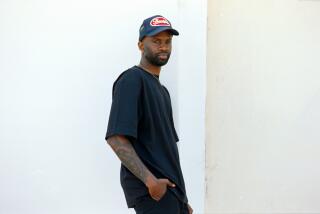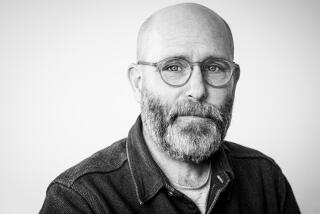Cardboard-Mounted Prints: Photographic Calling Cards
In 1854, French photographer Adolphe Eugene Disderi perfected a process for printing photographic images on paper. It replaced the glass daguerreotype, made it possible to produce multiple prints from one negative and created a craze that spread across the Atlantic to the United States.
Using a glass plate negative, Disderi made contact prints about the size of a playing card. They were called carte de visite , after the traditional calling card. An exhibit of 200 of these photographs--including many by famed Civil War photographer Matthew Brady--is currently on view at the California Museum of Photography at UC Riverside.
Early Calling Cards
At first these portraits were used as calling cards and handed to a servant who opened the door, but soon people discovered that they were ideal to send to friends and relatives and they were inexpensively priced.
It was Matthew Brady, America’s best-known photographer in the 1850s, who quickly recognized the financial potential of this new process, and his New York galleries turned out the cardboard-mounted prints by the hundreds during the years leading up to the Civil War. He realized that people would buy multiple photos of themselves. They would also collect likenesses of politicians, actors, singers and even some of P. T. Barnum’s circus freaks.
By 1862, the purchaser could select from a catalogue listing 2,000 portraits and war scenes. There were men of the Army and Navy, lawyers, physicians, prominent foreign individuals, authors, actors and famous women. Even more fascinating today are the scenes of the battlegrounds and military units Brady and his assistants photographed during the Civil War. People pasted their picture collections into leather-bound books. It was the birth of the family photo album with which one could entertain or bore dinner guests.
As one walks through the museum’s gallery, a number of the faces are familiar. There is Abraham Lincoln, whom Brady first photographed in 1860. A tintype medallion from a Brady portrait became a campaign button in 1860 and, worn by his supporters, made Lincoln’s then beardless face familiar throughout the nation.
There is also a portrait of Queen Victoria of Britain taken in 1867. Her expression is rather dour, but one must remember that her husband, Prince Albert, had died six years earlier, leaving her so grief stricken that she did not appear in public for three years and failed to open Parliament until 1866.
A Photographer’s Bonanza
The Civil War was a bonanza for Brady. Soldier from generals to privates wanted their photographs taken. Rows of these pictures may be seen at the exhibit, the officers wearing their finest blue uniforms complete with gold epaulets. Some hold their swords. Beards were in vogue. A few are recognizable. Most, however, are faces that have never appeared in the history books.
There is a picture of the unlucky Col. Elmer Ellsworth, a lawyer and friend of Lincoln who commanded the 11th New York Volunteers. In May of 1861 while leading his troops in a sweep through Alexandria to round up Confederate sympathizers, he removed a Confederate flag from the roof of the Marshall House. The proprietor shot him and Ellsworth became the first Union officer to die on Virginia soil. Looking at the other pictures, one wonders how many survived the four years of carnage.
UC Riverside’s photography collection constitutes one of the largest holdings in the world--more than 21 million images. The museum was established in 1973 with the donation by Robert Bingham of 2,500 cameras and photographic accessories. The collection has grown and, with the opening of a new museum building this fall in downtown Riverside, it is hoped that more of these vintage cameras will be on display.
During the year, the museum has a yearly agenda of major exhibitions and tours, as well as a series of public lectures and workshops. The carte de visite exhibit closes April 26.
Museum hours are Tuesdays through Saturdays, from 10 a.m. to 5 p.m. Closed Mondays. Admission is free. The museum is located in the Watkins House on Canyon Crest Drive at the University of California, Riverside. Take the Pomona Freeway to Riverside to the University Avenue exit. Go left under the freeway and follow this street past the campus. It bears to the left and you will see the Watkins House California Museum of Photography sign by the curb. Information: (714) 787-4787.
More to Read
The biggest entertainment stories
Get our big stories about Hollywood, film, television, music, arts, culture and more right in your inbox as soon as they publish.
You may occasionally receive promotional content from the Los Angeles Times.










